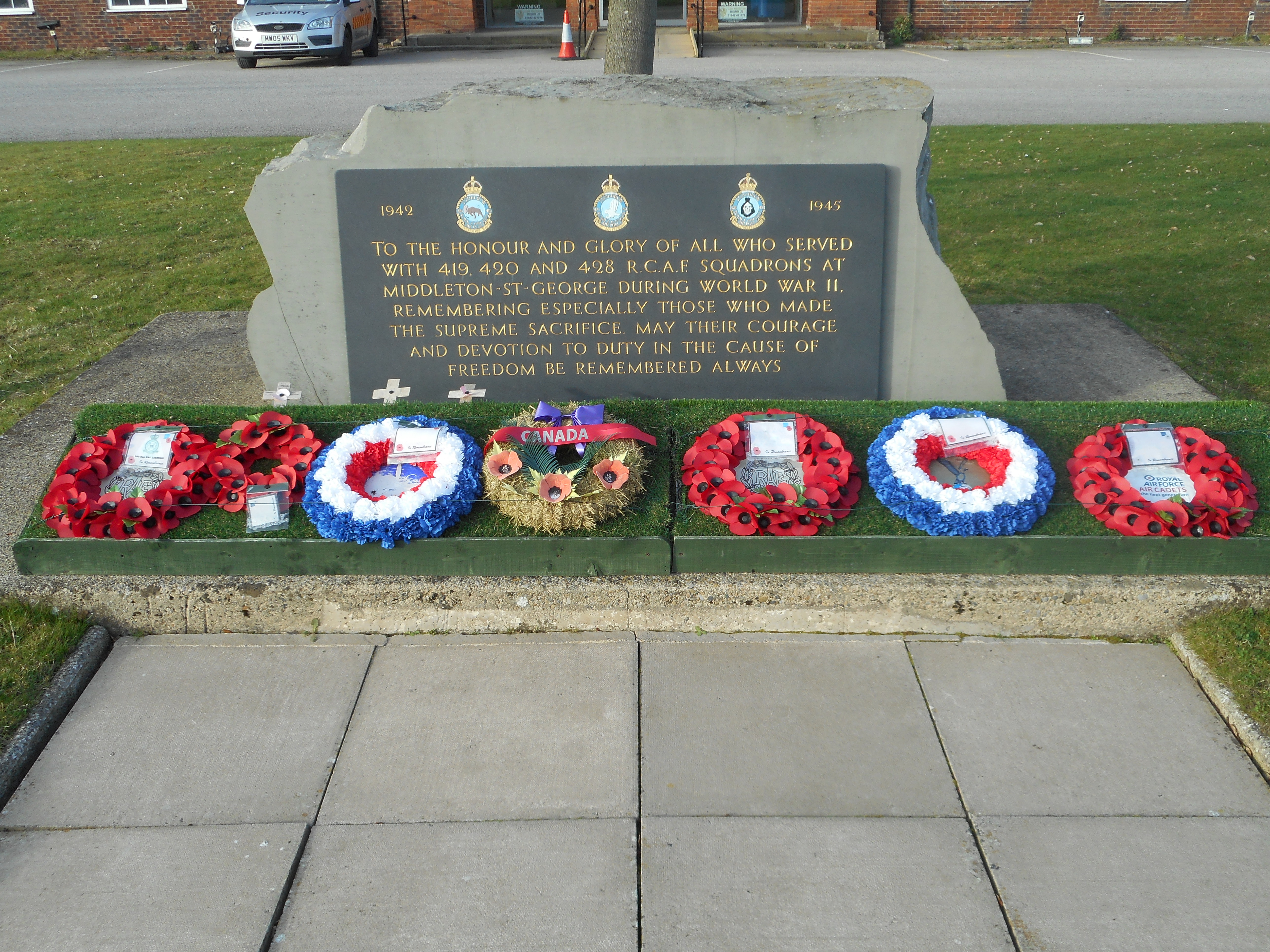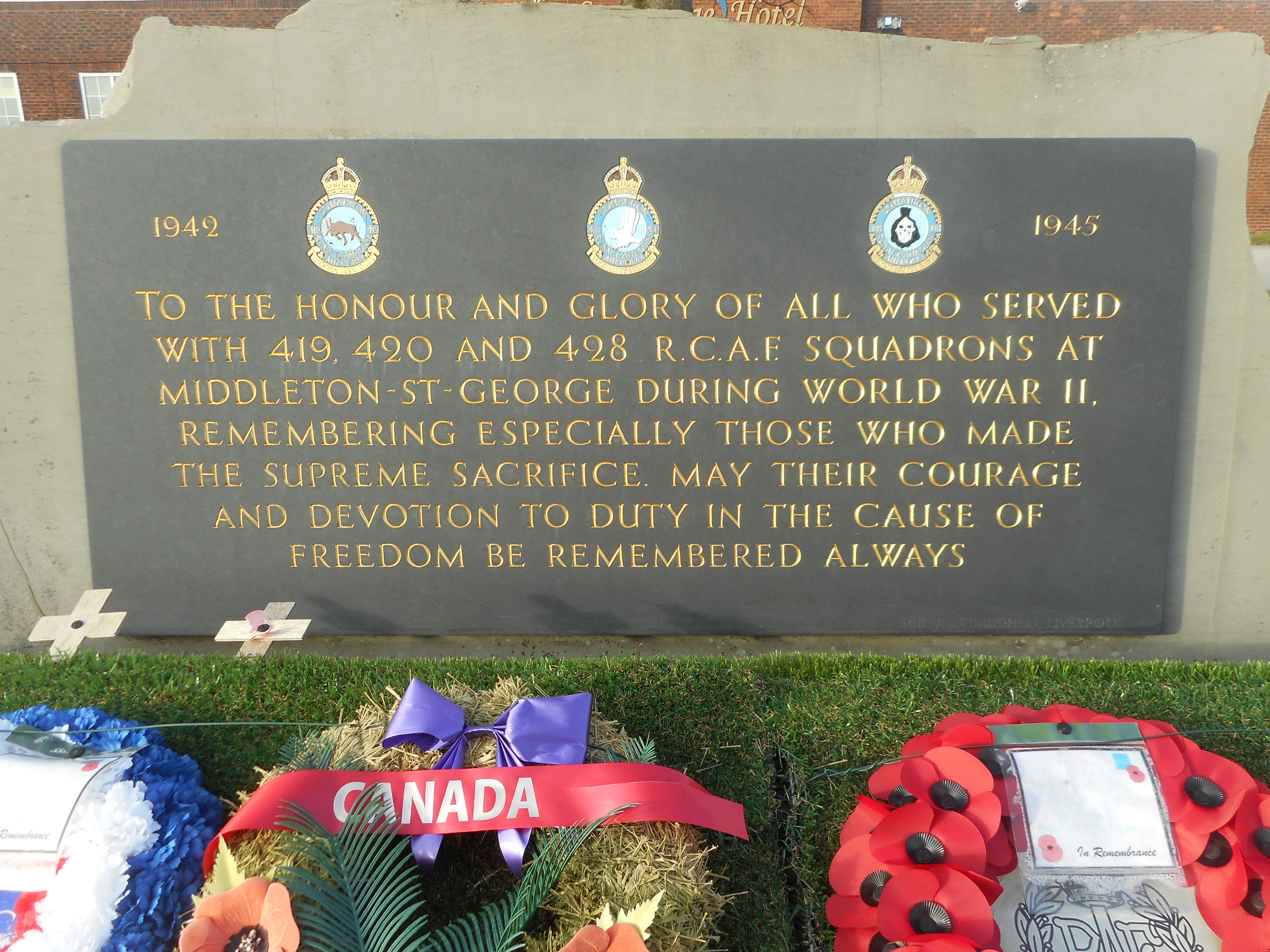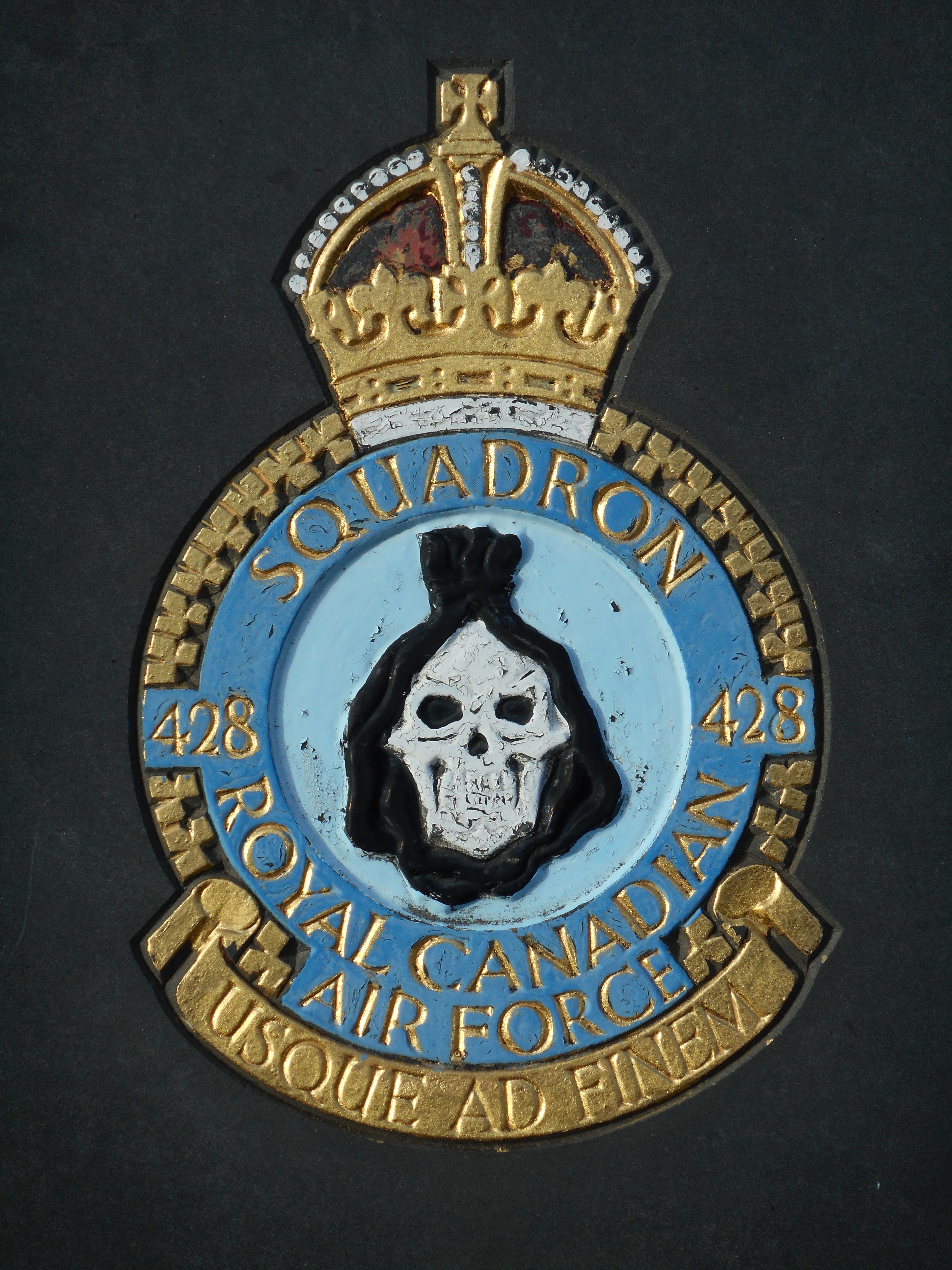Sylvester, Victor Thomas
Personal Information
| Rank | P/O |
| Forename(s) | Victor Thomas |
| Surname | Sylvester |
| Gender | M |
| Age | 22 |
| Decorations | |
| Date of Death | 03-08-1943 |
| Next of Kin | Son of John Henry Sylvester and Olive Sylvester (née Christopherson), of Moose Jaw, Saskatchewan. |
Aircraft Information
| Aircraft | Handley Page Halifax V |
| Serial Number | EB212 |
| Markings | NA-U |
Memorial Information
| Burial/Memorial Country | United Kingdom |
| Burial/Memorial Place | Runnymede Memorial |
| Grave Reference | Panel 178. |
| Epitaph |
IBCC Memorial Information
| Phase | 2 |
| Panel Number | 250 |
Enlistment Information
| Service Number | J/17282 |
| Service | Royal Canadian Air Force |
| Group | 6 |
| Squadron | 428 (Ghost) |
| Trade | Pilot |
| Country of Origin | United States of America |
Other Memorials
| Location | Adjacent to fomer St. Georges Hotel, Teesside Airport, County Durham |
| Country | United Kingdom |
| Memorial Type | Memorial Stone with inscribed slate tablets |
| Memorial Text | Dedicated to all who served on 428 (RCAF) Sqn at Middleton St. George during WWII, especially those who made the supreme sacrifice |
Miscellaneous Information
| Victor was born at Finley, North Dakota, USA on 10 March 1921. His father was born in Ettrick, Wisconsin, USA.and was a farmer, his mother born in Finley, North Dakota. He had two sisters, Judith and Thelma and four brothers: John Omer, Clarence Eugene (in Canadian Army overseas) , Vernon Stanley RCAF, and Gordon Freeman #14 EFTS RCAF, Aylmer, Ontario. His brother Clarence was a Lance Bombardier in the Canadian Army and lost his life in Normandy on 7 July 1944 whilst serving with 3 Anti-Tank regiment. Victor went to Harrow School 1928-1936 (Complete) and Paswegin School 1936-1940 (Grade X1). The sports he took part in were hockey softball and baseball. He took on general farming work between 1940-1941 when he then enlisted on 27 May 1941 at Saskatoon. |
| After training Victor embarked for the U.K. on 20 March 1942 arriving at 3 PRC on 29 March. He went on to 14 (P) AFU on 15 June 1942, 25 OTU 28 July 1942, 26 OTU 29 September 1942, 1664 CU 13 June 1943, 1659 CU 17 June 1943. |
Commonwealth War Graves Commission
The National Archives
| Record of Events (Operational Record Book) AIR 27/1849/16 |
| Summary of Events (Operational Record Book) AIR 27/1849/15 |
Fellow Servicemen
Last Operation Information
| Start Date | 02-08-1943 |
| End Date | 03-08-1943 |
| Takeoff Station | Middleton St. George |
| Day/Night Raid | Night (3% moon) |
| Operation | Hamburg. 740 aircraft, 30 losses (4.1%). The raid failed due to a large thunderstorm over the target. Many crews turned back of bombed alternative targets. At least four aircraft were Lost due to icing. No PFF marking took place and bombing was scattered as a result. Many nearby towns were bombed, particularly Elmshorn due to a house being struck by lightning and crews spotting the fire through the clouds. |
| Reason for Loss | Presumed Lost over the sea. |



